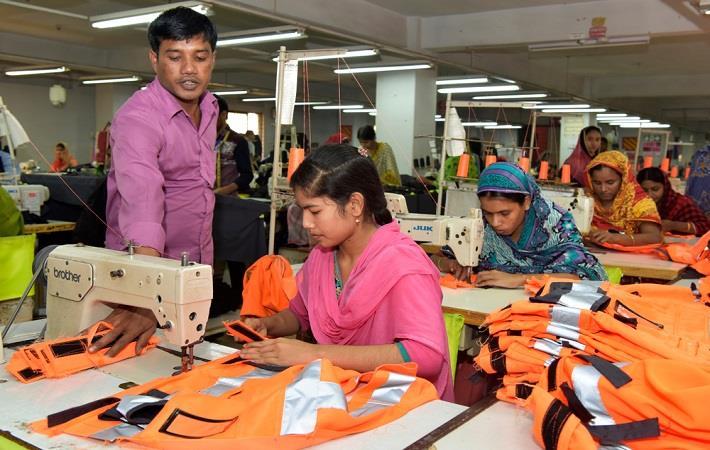Bangladesh garment exporters are hopeful of exports rebounding by December, buoyed by demand in the West ahead of Christmas. Apart from dreaming to have a bigger market share in the United States because of the US-China trade conflict, they feel they will not fall behind Vietnam in overseas sales. There will be a downward trend in exports in August-September.
Vietnam exported about $30 billion of garment products between July and June, surpassing Bangladesh that shipped about $28 billion worth clothes, according to the General Statistics Office of Vietnam and the Bangladesh Export Promotion Bureau.Bangladesh garment exporters are hopeful of exports rebounding by December, buoyed by demand in the West ahead of Christmas.Apart from dreaming to have a bigger market share in the United States because of the US-China trade conflict, they feel they will not fall behind Vietnam in overseas sales. There will be a downward trend in exports in August-September.#
“We’re operating at 60-70 percent of our capacity at present. We’re getting work orders, but not enough. Only the basic items are exported now. Big fashion houses haven’t opened yet,” Anwarul-Alam-Chowdhury Parvez, former president of Bangladesh Garment Manufacturers and Exporters Association, was quoted as saying by bangla media reports.
Vietnam, that superseded Bangladesh in garment exports, lost 11.7 percent of exports in the six months.
“We’re not worried at all that Vietnam surpassed us in garment exports. It is not the absolute number of exports but the growth that matters. The question is, if we can reach our target or if we’re making enough growth,” Chowdhury said.
As Bangladesh experienced continuous year-on-year growth, the export earnings reached $34.13 billion in fiscal 2018-19. It declined to $32.83 billion in fiscal 2019-20 due to the pandemic.
“All we need to do now is to tackle the challenges created by the pandemic. Then we may reap some good results from it. We need to use this opportunity and both the government and the private sector must start working on a long-term plan to ensure it,” said Chowdhury, also president of Bangladesh Chamber of Industries.
“Four reasons are there for Vietnam superseding us in garment exports. Firstly, our factories were closed in April due to the COVID-19 outbreak. They reopened on a limited scale in May and June. We were supposed to export garments worth $9 billion in those three months, when we could only export garments worth $3.5 billion,” said Mohammed Hatem, vice president of Bangladesh Knitwear Manufacturers and Exporters Association.
“Secondly, most of the investors in Vietnam are from China or Hong Kong. They have a better communication system. They can collect the raw materials from China in 3-4 days and can deliver the finished products soon to the buyers. Naturally, the buyers tend to buy more from them. Vietnam’s Free Trade Agreement with the US and other countries is the third reason behind their growth. Bangladesh failed to have an FTA,” he said.
“We need to pay 15 per cent duty when we export garments to the US, while Vietnam pays only 5 per cent. This is how we fell behind,” Hatem said.
“The fourth and biggest reason is that the workers in Vietnam are far more skilled than ours, reducing their production cost. They have to pay lower utility bills too,” he added.
Fibre2Fashion News Desk (DS)
